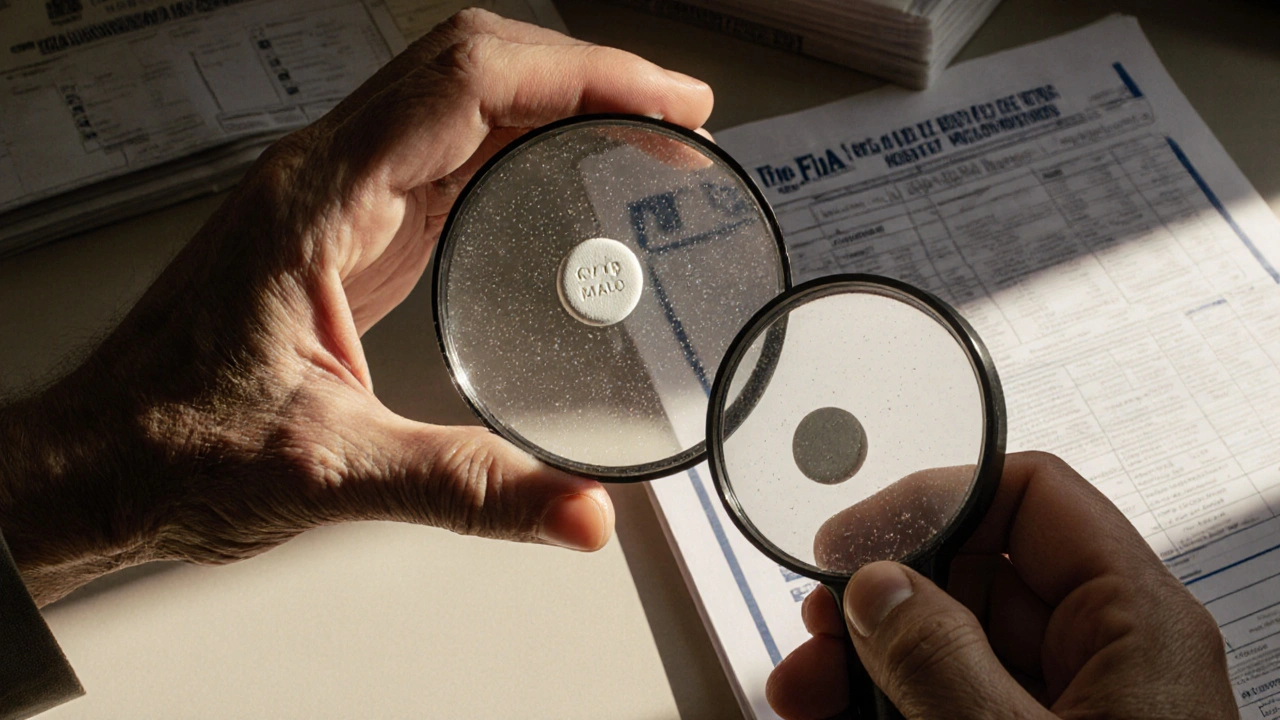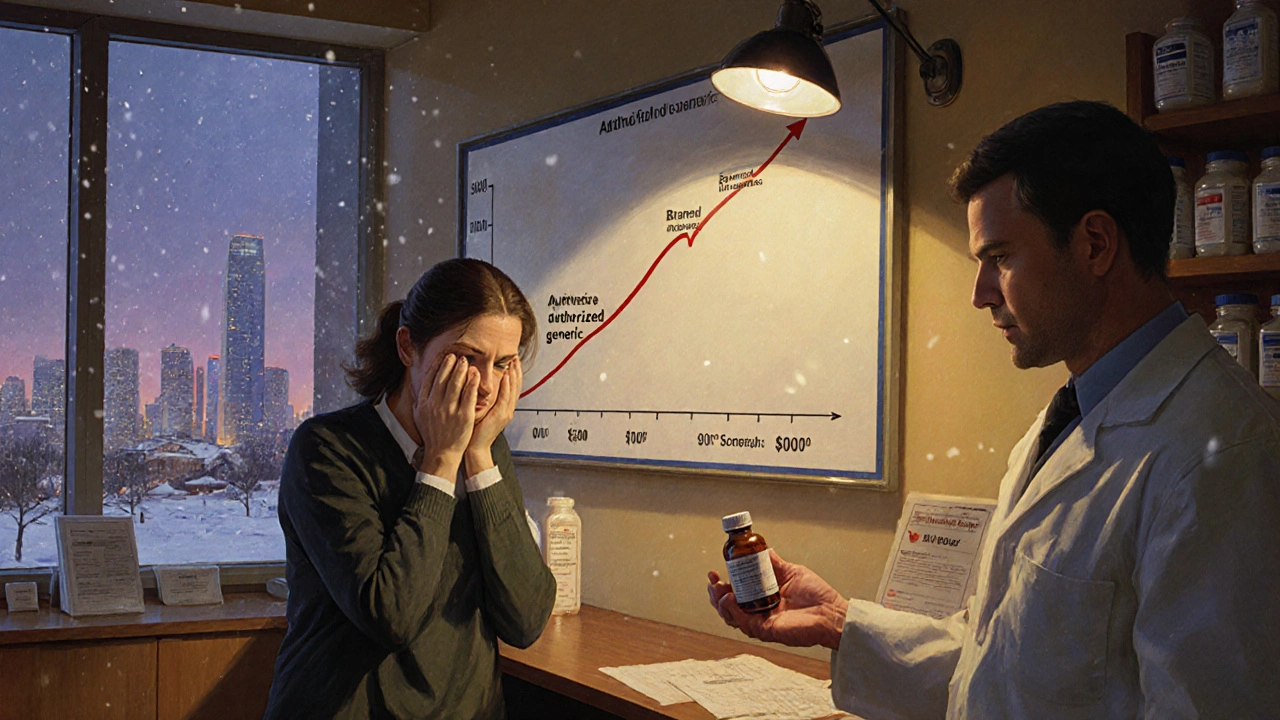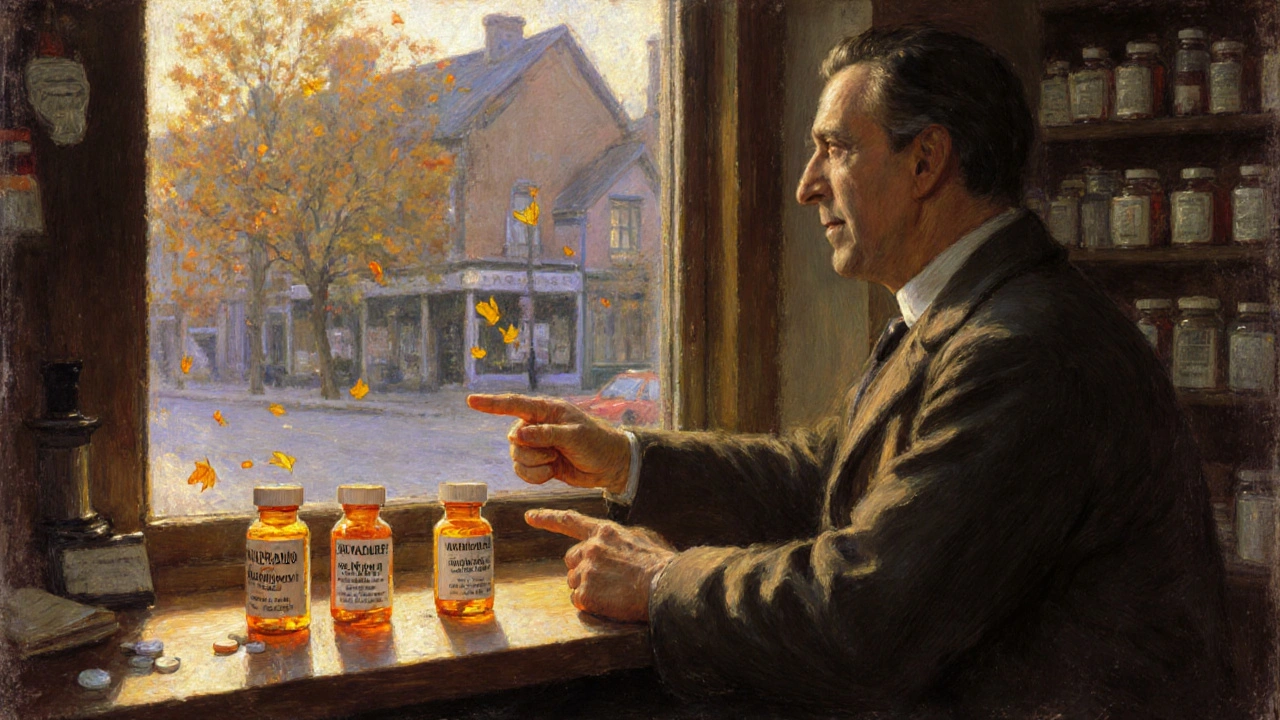Switching from a brand-name drug to a generic can save you hundreds of dollars a year. But what if the generic you get makes you feel off? Nausea, headaches, or weird side effects you never had on the brand? You’re not imagining it. Sometimes, it’s not the active ingredient-it’s the fillers, dyes, or binders that differ. That’s where authorized generics come in.
What Exactly Is an Authorized Generic?
An authorized generic is the exact same pill, capsule, or injection as the brand-name drug you’ve been taking-same active ingredient, same inactive ingredients, same size, same color, same everything. The only difference? It doesn’t have the brand name on it. It’s made by the same company that makes the brand, but sold under a different label at generic prices. Think of it like buying a Coca-Cola bottle that says "Cola Soda" on the label instead of "Coca-Cola." Same recipe, same factory, same taste. Just cheaper. The FDA defines it clearly: an authorized generic is a drug approved under the original brand’s New Drug Application (NDA), not the generic applicant’s Abbreviated New Drug Application (ANDA). That means it doesn’t have to prove bioequivalence-it’s already proven because it’s identical.Why This Matters More Than You Think
Most generic drugs are perfectly safe and effective. But for certain medications-especially those with a narrow therapeutic index-the tiny differences in inactive ingredients can make a big difference. Drugs like levothyroxine (for thyroid), warfarin (a blood thinner), and some epilepsy medications fall into this category. Even small changes in how the drug is absorbed can throw your levels off. A 2023 study in US Pharmacist found that 32% of patients reported side effects after switching from brand to traditional generics, especially with these high-risk drugs. One pharmacist in Melbourne told me about a patient on levothyroxine who kept having fatigue and heart palpitations after switching to a generic. She switched back to the brand, then asked her doctor about authorized generics. When she got the authorized version, her symptoms vanished. Same drug. Same body. Just no confusing fillers. Authorized generics remove that guesswork. No bioequivalence studies needed. No formulation tweaks. You’re getting the exact same medicine your doctor prescribed-just without the brand markup.How Much Do They Save You?
Authorized generics typically cost 15-20% less than the brand-name version. That’s not as cheap as some traditional generics, which can be 80% cheaper. But here’s the catch: they’re often priced lower than the brand even before the first generic hits the market. Why? Because the brand company itself is selling it. They’re not trying to protect their profit-they’re using the authorized generic to compete with the first generic filer. The FTC found that when brand companies launch an authorized generic during the first generic’s 180-day exclusivity window, prices drop 25-30% compared to markets where no authorized generic is offered. For patients on long-term meds, that adds up. If your brand costs $120 a month, an authorized generic might run you $95. A traditional generic could be $30. But if the traditional generic makes you sick, you’re paying more in doctor visits, lab tests, and lost workdays.
How Do You Know If One Exists for Your Drug?
Not every brand has an authorized generic. As of 2023, only 15-20% of brand-name drugs have one available. But the number is growing. IQVIA reports authorized generics made up 8.7% of all generic prescriptions by volume in 2022-up from 5.2% in 2018. The easiest way to check? Ask your pharmacist. They can look up your drug’s National Drug Code (NDC) and cross-reference it with the brand. Most chain pharmacies have systems in place to flag authorized generics. If you’re on Medicare Part D, they’re covered at generic copay levels 92% of the time. Commercial insurers cover them about 78% of the time. You can also check the FDA’s quarterly list of authorized generics. It’s not perfect-some aren’t listed yet-but it’s a good starting point. The FDA is planning to add a dedicated section to the Orange Book in mid-2024, making this easier for everyone.What to Say at the Pharmacy
You won’t always know you’ve been given an authorized generic. In a 2022 Kaiser Family Foundation survey, 28% of patients didn’t realize they got one until after they picked up the prescription. That’s because the packaging looks different-no brand logo, different color, maybe different shape. Don’t panic. It’s still the same drug. But if you’re used to the brand’s look and feel, it can cause anxiety. Here’s what to say when you pick up your prescription:- "Is this an authorized generic of [brand name]?"
- "Can you confirm it has the same inactive ingredients as the brand?"
- "I had issues with the last generic I got-can you check if this is the authorized version?"
When Authorized Generics Are Best
They’re not always the best choice-but they’re ideal in three situations:- You’ve had side effects with traditional generics.
- You’re on a narrow therapeutic index drug like levothyroxine, warfarin, or phenytoin.
- You want the exact same formulation but can’t afford the brand price.

What About the Controversy?
There’s a dark side. Some brand companies use authorized generics as a tactic to kill off competition. The Hatch-Waxman Act gives the first generic company 180 days of exclusivity to recoup R&D costs. But if the brand launches its own authorized generic during that window, it floods the market with a cheaper version-and the first generic can’t compete. The Generic Pharmaceutical Association says 43% of authorized generics launch during that 180-day window. That’s legal-but it undermines the whole point of the exclusivity rule. Critics call it "pay-for-delay lite." The FDA and FTC are watching. The Biden administration’s 2022 executive order specifically called out this practice as anti-competitive. Whether it leads to new rules remains to be seen. But here’s the thing: even if it’s a corporate tactic, the consumer still wins. Prices drop. Patients get better options. The system is flawed, but the outcome for you? Still good.What’s Next?
Authorized generics are growing fast. By 2026, they could make up 12-15% of the generic drug market. That’s up from under 9% today. The push is strongest for complex drugs-injectables, inhalers, and those with tight therapeutic windows. The FDA’s 2023 initiative to improve transparency will help. Once authorized generics are clearly listed in the Orange Book, doctors and pharmacists will be able to recommend them with confidence. For now, if you’re switching from a brand and have had bad experiences with generics, ask about the authorized version. It’s not magic. It’s just the same drug, without the brand price tag.Frequently Asked Questions
Are authorized generics the same as brand-name drugs?
Yes. Authorized generics are made by the same company as the brand-name drug, using the exact same active and inactive ingredients, dosage form, strength, and manufacturing process. The only difference is the label and packaging. The FDA considers them therapeutically equivalent.
Do authorized generics cost less than traditional generics?
Usually not. Traditional generics are often cheaper because multiple companies produce them, driving prices down. Authorized generics typically cost 15-20% less than the brand, but may be slightly more expensive than the cheapest traditional generic. However, they’re often more reliable for patients who react poorly to different inactive ingredients.
Can my pharmacist substitute an authorized generic without my doctor’s approval?
Yes, unless your doctor wrote "dispense as written" or "no substitution" on the prescription. Authorized generics are considered therapeutically equivalent to the brand, so pharmacists can substitute them just like traditional generics under state pharmacy laws.
Why aren’t authorized generics listed in the FDA’s Orange Book?
They’re not listed because they’re marketed under the brand’s original NDA, not a separate generic application. The Orange Book tracks therapeutic equivalence for ANDA-approved generics, not NDA-marketed products. However, the FDA plans to add a dedicated section for authorized generics in mid-2024 to improve clarity.
How do I know if my drug has an authorized generic?
Ask your pharmacist or check the FDA’s quarterly list of authorized generics online. You can also search your drug’s name plus "authorized generic" in a trusted pharmacy database like GoodRx or Drugs.com. Only about 15-20% of brand drugs have one available, so it’s not guaranteed-but it’s worth asking.


Akash Chopda
November 23, 2025 AT 20:00Bartholemy Tuite
November 25, 2025 AT 05:44Nikki C
November 26, 2025 AT 11:58Alex Dubrovin
November 28, 2025 AT 01:35Jacob McConaghy
November 28, 2025 AT 02:40Natashia Luu
November 29, 2025 AT 19:24Vineeta Puri
December 1, 2025 AT 13:35Victoria Stanley
December 2, 2025 AT 08:39Andy Louis-Charles
December 4, 2025 AT 07:43Douglas cardoza
December 4, 2025 AT 10:49Adam Hainsfurther
December 5, 2025 AT 00:44Rachael Gallagher
December 5, 2025 AT 22:09steven patiño palacio
December 6, 2025 AT 23:31stephanie Hill
December 7, 2025 AT 06:13Sam Jepsen
December 7, 2025 AT 23:03